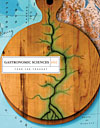slow+design, examining the slow approach to design
In the article “Beyond Food Design to a Sustainable Sensoriality” (Italian version), Giacomo Mojoli, vice-president of Slow Food International, contemplates what it means to mutually contaminate the sphere of food sensoriality with the wider one of material, manufacturing and creative sensoriality:
“Slow Food is one of these paradigms, a sort of strategic design project, a network prototype, applied to the world of food, agriculture and food education. Slow Food proposed a vision, a way of thinking and acting which by now has gone beyond food to inspire a new and eco-compatible way of conceiving development and economy, on a local as much as a global scale.”
Mojoli sees the objectives of Slow Food’s new slow+design initiative as to “reunite the quality of products with that of the environment and the social forms which generate them” and to “cross the experience of Slow Food with that of those who study and promote the new economy of social networks, the so-called distributed economy, and those who, in the practical and cultural ambit of design, are concerned with the quality of products, services and communications.”
“The Slow Model: A Strategic Design Approach” (Italian version) is the title of the second article on the topic by Ezio Manzini (blog) and Anna Meroni of the Milan Polytechnic. They provide a more in-depth analysis of the relation between strategic design and the slow approach. They argue that a new sustainability can arise out of this innovative union, with a rigorous sensibility towards the environment, the quality of life and daily rhythms which can be integrated into the planning of spaces and objects.
“A slow approach means first of all the simple (but in these times revolutionary) affirmation that it is not possible to produce and appreciate quality without taking the time needed to do so, i.e. if we do not slow down in one way or another.
But slow today doesn’t mean just that; it also means a concrete and practicable way of putting this idea into action. It means cultivating quality by connecting products with producers, with the production sites and with the end users who participate in diverse ways in their definition and thus become co-producers.
The slow approach therefore outlines a model of production and alternative consumption which is both subversive and feasible, a model which confronts head on the ideas and practices of today’s globalization. Nevertheless it can be immediately realized on a local level and, as Slow Food has proven, with success.”
In their long essay, they suggest three strategic directions for the slow+design initiative: localisation and experience, phenomenological quality and sustainability, and skill and self-determination.
To find out more about the slow+design initiative, see this earlier post on Putting People First. In 2004 the New York Times also published a nice feature on the launch of the University of Gastronomic Sciences.




